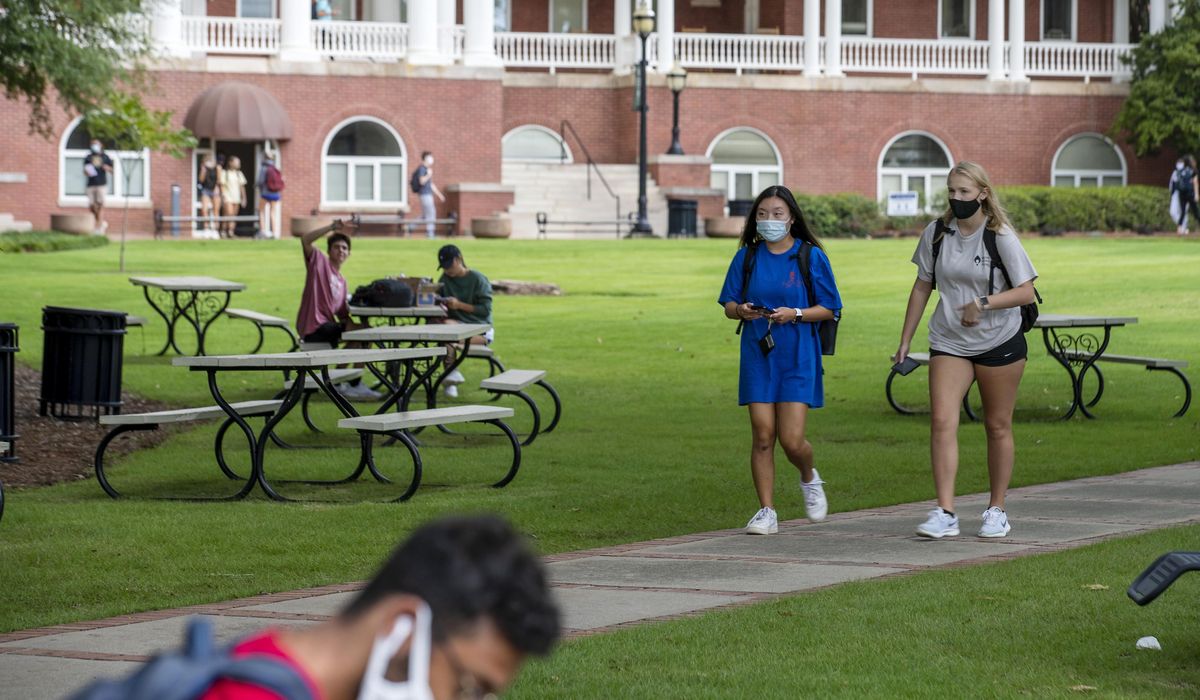


The National Student Clearinghouse Research Center has retracted a report that fewer freshmen started college last fall, blaming a “methodological error” for miscounting some as dual-enrolled high school students.
The Herndon, Virginia-based education nonprofit released preliminary estimates in October that showed first-year headcount dropped 5% from fall 2023, the sharpest decline since the pandemic. That included a 6% plunge in 18-year-old freshmen enrolling after high school graduation.
Those numbers bolstered public criticism that the Education Department discouraged college applicants with a chaotic revision of the Free Application for Federal Student Aid. The data also informed multiple news reports, including four stories published in The Washington Times between October and December.
Reversing course this week, the clearinghouse said it discovered the mistake while preparing its annual January final estimate. It said the upcoming report, due Jan. 23, will show first-year enrollment increased rather than plunged in the fall.
“We deeply regret this error and are conducting a thorough review to understand the root cause and implement measures to prevent such occurrences in the future,” said Doug Shapiro, the clearinghouse’s executive director.
The clearinghouse said the error, which affects all of its preliminary enrollment reports from 2020 to 2024, didn’t alter its total undergraduate enrollment estimates.
“Previous reports were also affected by the methodology error, but the effect was magnified this year because more high school students participated in dual enrollment programs,” the clearinghouse said.
Mr. Shapiro said the error didn’t affect the final enrollment reports from that period, which the center issues each January after analyzing more comprehensive figures with a different research method.
Federal response
The now-retracted October report came weeks after Republicans and Democrats blasted the Education Department in a House subcommittee hearing for botching the FAFSA revamp.
Citing the department’s internal data, the Government Accountability Office reported in September that a three-month FAFSA launch delay and technical glitches contributed to 432,000 fewer students submitting college aid applications for the 2024-25 term, a 3% decrease from the previous application cycle.
In a statement emailed to news outlets shortly after the clearinghouse published its retraction Monday, the Education Department’s top higher education official welcomed the correction.
“We are encouraged and relieved that updated data from the National Student Clearinghouse shows freshman enrollment is up this school year,” said Undersecretary James Kvaal. “The increase is consistent with what we are seeing on the financial aid side: More than 5% more students are receiving federal aid this year.”
Reached for comment, several higher education researchers offered mixed reactions to the clearinghouse’s retraction.
“As a researcher, I can speak from experience that coding errors happen,” said Robert Kelchen, head of the Department of Educational Leadership and Policy Studies at the University of Tennessee in Knoxville. “But it’s also crucial to triple-check numbers before reporting them due to how high profile this report is.”
Some expressed hope that the Jan. 23 follow-up will shed more light on what happened.
“As a result of the October report, many in the media and in the field of higher education sought explanations for the significant drop in first-year students,” said Tim Cain, a higher education professor at the University of Georgia. “Much of the blame was pinned on the problematic rollout of FAFSA, which was thought to have deterred students from attending and generated bad publicity for the Department of Education.”
Politicizing numbers
Other scholars questioned the timing of the clearinghouse adjusting freshmen headcount upward a week before President-elect Donald Trump — who has repeatedly vowed to downsize the Education Department — takes office Monday.
Peter Wood, president of the conservative National Association of Scholars, said it reminded him of the Labor Department’s recent decision to “drastically revise” rosy economic numbers from the Biden-Harris administration.
“In other words, we have lots of precedent for official statistics turning out to be malleable for political reasons,” said Mr. Wood, a former associate provost at Boston University.
In emails to The Times, the Education Department declined to say whether the federal agency pushed for the retraction and referred further questions to the National Student Clearinghouse.
Mr. Shapiro, the clearinghouse’s director, confirmed that he informed the Education Department and National College Attainment Network about the retraction in advance “in case they would be contacted with questions.”
“The Research Center does not ever change its findings to suit the interests or preferences of any outside entity or individual,” Mr. Shapiro told The Times on Wednesday.
• Sean Salai can be reached at ssalai@washingtontimes.com.
